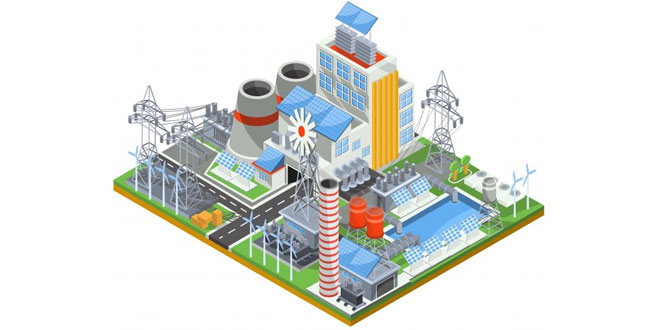Question: How do industries pollute the environment?
Answer: Industries have increased pollution and degraded environment. Industries create four types of pollution mainly air, water, land and noise.
The smoke emitted by the industry pollutes the air and water immensely. Air pollution is caused by the presence of a higher proportion of undesirable gases such as carbon monoxide and sulphur oxide.
Source of water pollution are numerous. Most important are the industrial effluent that discharge into rivers. They are both organic and inorganic. They pollute the water. Unwanted loud noise is also pollution. It arises from industries and the different means of transport. Noise causes impairment to hearing.
Question: Discuss the steps to be taken to minimize environmental degradation by industry?
Answer: Minimizing the use of water for processing by reusing and recycling it, is done in two or more successive stages.
- Harvesting of rainwater to meet water requirements.
- Treating hot water and effluents before releasing them into rivers and ponds.
Treatment of industrial effluents can be done in three phases:
(i) Primary treatment by mechanical means.
This involves screening, grinding, flocculation and sedimentation.
(ii) Secondary treatment by biological process.
(iii) Tertiary treatment by biological, chemical and physical processes. This involves recycling of waste water.
Question: Differentiate between Cotton textile and Iron & steel?
Answer: Cotton Textile:
- An Agro-based industry
- A light industry
- Labour intensive
- A consumer industry
Iron & Steel:
- A mineral based industry
- A heavy industry
- Capital intensive
- A basic industry
Question: Differentiate between Agro-based Industries and Mineral-based Industries?
Answer:
Agro-based Industries:
- Raw materials are derived from agriculture, e.g. jute.
- These are light industries.
- Are consumer industries.
- Spread all over the country.
Minerals-based Industries:
- Raw materials are obtained from minerals, e.g. iron.
- These are heavy industries.
- Are basic industries.
- Located where raw materials are available.
Question: What are ‘agglomeration economies’?
Answer: Cities provide markets and also provide services such as banking, insurance, transport, labour, consultants and financial advisers, etc., to the industries. Many industries tend to come together to make use of the advantages offered by the urban centers known as agglomeration economies. Gradually a large industrial agglomeration takes place. So, it is basically coordination of various industries in a city for the development of manufacturing industries.
Question: With the help of a flow, discuss the classification of Industries?
Answer: Classification Of Industries.
On the basis of raw materials used:
- Agro Based Industries: Cotton, woolen, jute, silk textile, rubber, sugar, tea, coffee, etc.
- Mineral Based Industries: Iron and steel, cement, aluminium, petrochemicals, etc.
According to their main role:
- Basic or Key Industries: These industries supply their products or raw materials to manufacture other goods, e.g. iron and steel, copper smelting, aluminium smelting.
- Consumer Industries: These industries produce goods which are directly used by consumers, e.g. sugar, paper, electronics, soap, etc.
On the basis of capital investment:
- Small Scale Industry: If the invested capital is upto Rs. one crore, then the industry is called a small scale industry.
- Large Scale Industry: If the invested capital is more than Rs. one crore, then the industry is called a large scale industry.
On the basis of ownership:
- Public Sector: These industries are owned and operated by government agencies, e.g. SAIL, BHEL, ONGC, etc.
- Private Sector: These industries are owned and operated by individuals or a group of individuals, e.g. TISCO, Reliance, Mahindra etc.
- Joint Sector: These industries are jointly owned by the government and individuals or a group of individuals, e.g. Oil India Limited.
- Cooperative Sector: These industries are owned and operated by the producers or suppliers of raw materials, workers or both. The resources are pooled by each stakeholder and profits or losses are shared proportionately. AMUL which is milk cooperative is a good example. The sugar industry in Maharashtra is another example.
Based on the bulk and weight of raw materials and finished goods:
- Heavy Industries: Iron and steel
- Light Industries: Electronics
 Class Notes NCERT Solutions for CBSE Students
Class Notes NCERT Solutions for CBSE Students





